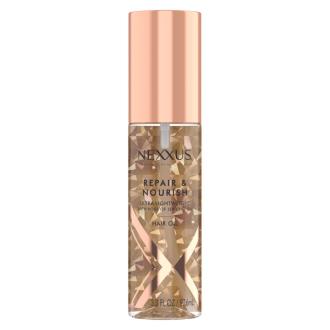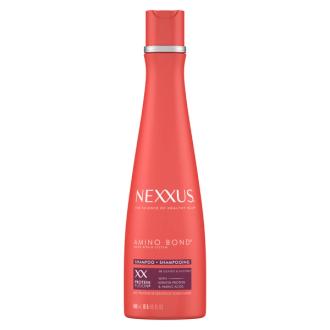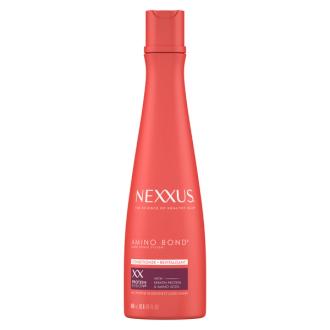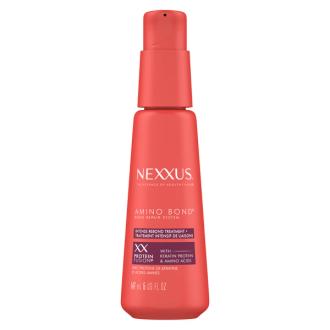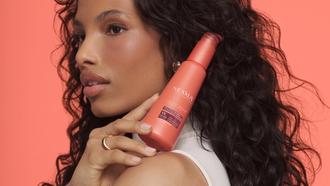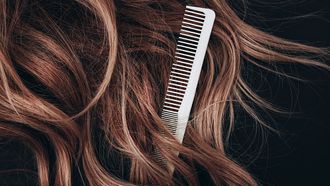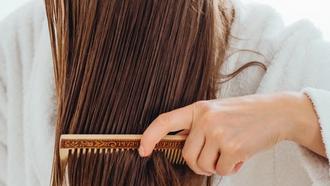The five main types of hair damage – and how to repair each

It’s impossible to avoid damaging your hair: while some factors can be minimized or evaded with smart styling techniques or high tech tools, others – from brushing to time spent outside – are simply a part of everyday life.
Signs of hair damage range from split ends and breakage to frizz, dullness to dryness, and can result in hair that lacks strength, shape and shine. Doing a little detective work to decipher what might be damaging your hair is key to preventing further harm: so, what causes hair damage?
1. Chemical damage
This one is easy to understand: if you’re partial to chemical treatments, like chemical straightening or perms, or are a regular at your local swimming pool, you’re in the chemical damage camp. Chemical treatments and chlorine from pools can break down the hair cuticle – the outer layer that protects the hair’s core – and diminish its ability to retain moisture. That leads to breakage, dryness, frizz, split ends, loss of shine and decreased elasticity.
How to prevent chemical damage
If you’re a regular swimmer, wear a swim cap or soak your hair in non-chlorinated water before getting in the pool: this minimizes the amount of chlorine your hair will absorb. Once you’re out of the pool, immediately rinse hair thoroughly. If you’re partial to chemical treatments like perms or salon straightening, prevent weakening by cutting down on the heat styling you do at home, and adopting a diligent hair care regimen to fix and strengthen between treatments such as the Keraphix line, which is specifically designed to treat severely damaged hair.
2. Color damage
Frequent coloring and hair damage often go hand in hand, especially when a color change relies on harsher chemicals like bleach. Whether you’re opting for a bold new shade or are subtly covering grays, the process of coloring alters the structure of the hair: the cuticle is lifted and the natural pigment broken down, creating a reaction that allows the new color in. Repeated coloring leads to weaker hair and the use of bleach can sap protein from your hair too, leaving it stringy or limp.
How to prevent color damage
You can color your hair AND keep it healthy – you just need daily products that are formulated to protect and repair colored hair specifically.The Nexxus Color Assure range keeps color-treated hair healthy thanks to a ProteinFusion blend that contains elastin protein and quinoa. The collection, which includes shampoo, conditioner and a mask, helps replenish hair with the nutrients and protein it loses during the coloring process – it also keeps your color vibrant for up to 40 washes.
3. Thermal damage
Heat styling tools like blow dryers, flat irons and curling irons might make your hair look amazing, but they lead to damage. Heat can erode the cuticle, leaving the hair’s inner layers vulnerable, resulting in loss of elasticity, decreased shine, increased frizz and dry, brittle strands.
How to prevent thermal damage
The higher the temperature, the worse the damage so keep the temperature on your styling tools as low as possible. Try to limit the frequency of your heat styling and swap air drying for blow dries whenever possible. If you’re a dedicated heat stylist (as many of us are), then a heat protection product is your best friend: the Nexxus Prep & Protect Leave-In Spray creates an invisible barrier between hair and the heat source, keeping heat out and moisture in, while the Blow Dry Frizz Control Cream both protects hair and smooths frizz as you style.
4. Mechanical damage
Mechanical damage is wear and tear that happens when styling: excessive brushing, especially if hair is wet, overzealous detangling, tension from tight hairstyles or using poor-quality hair ties (top tip: if elastic bands are in your toolkit, it’s time to switch to satin scrunchies). Mechanical damage can cause hair breakage in the mid-shaft, split ends and dullness.
How to prevent mechanical damage
Avoid overly tight hairstyles and try rotating your styles, so you don’t repeatedly add stress to the same sections. Always brush as gently as possible, especially when detangling or combing through wet hair and consider switching to a silk pillowcase to help cut back on friction at night. Switching to a wide-tooth comb or wet brush is helpful, and try drying with a microfiber towel to absorb excess water, rather than rubbing hair dry after washing. And once hair is dry, try our Repair & Nourish Ultra Lightweight Hair Oil. Its restorative formula is made with Rose of Jericho and Damascus Rose oils to seal in moisture and bring dry, tired strands back to life.
5. Environmental damage
We all know the importance of sunscreen for our skin, but did you know the sun is believed to be the number one culprit for hair damage (particularly if hair is color treated and already vulnerable)? Like heat styling, sitting in the sun can impact the cuticle: when hair is healthy, the cuticle is made up of overlapping cells that sit flush against the hair fiber, letting moisture in and out and protecting the proteins within. UV rays can stop these cells from fulfilling their protective work, causing them to lift and proteins to be lost, leaving hair dry, brittle or discolored.
How to prevent environmental damage
Wear a hat in hot weather and spritz hair with a heat protection product, like Nexxus Prep & Protect Leave-In Spray, whenever you’re reaching for your SPF.
How to Fix All 5 Types of Hair Damage
What do all five of these damage types have in common? They all lead to broken hair bonds and lost amino acids and hair protein. The Nexxus Amino Bond range featuring Shampoo, Conditioner and Intense Rebond Treatment uses amino acids and keratin protein to fix these bonds from the first use.No matter the cause of your damage, hair is rebuilt, new bonds are generated and replenished and hair becomes stronger, smoother with less split ends, easier to style and more damage resistant. Consider a bond-building product as your do-it-all bodyguard against hair damage.
